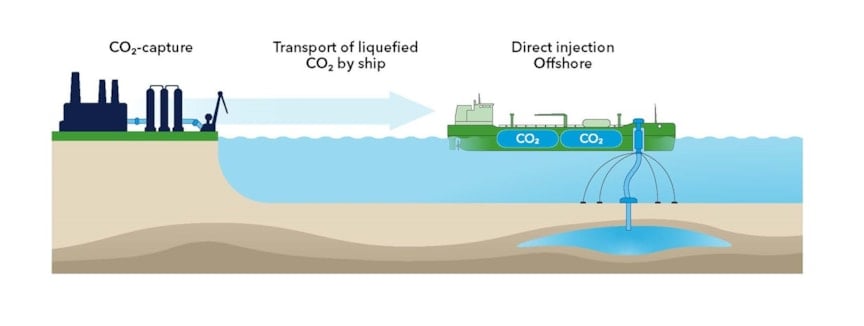CO2 offshore injection
Joint industry project
A joint industry project to develop a common approach to assess and qualify concepts for offshore injection of CO2
As the energy industry works towards a more sustainable energy future, the growing CCS industry has reached an inflection point with numerous projects across the world in various stages of planning. However, as there is no established infrastructure for pipeline transport of CO2, many projects consider using concepts where ships are used as the mode of transport from collection to storage, and an injection using an offshore injection concept. This joint industry project (JIP) is a collaborative effort dedicated to addressing the challenges posed by offshore injection of CO2. Our mission is to establish a common approach to the assessment and qualification of CO2 offshore injection concepts, which will ensure industry alignment and bring down costs.
Challenge
Concepts for injection have been applied for decades within the oil and gas industry but have not yet been deployed at scale within the CCUS industry. To do so, a common approach to assessing and qualifying concepts for offshore injection of CO2 must be established.
There are different offshore injection concepts that could be explored as part of this joint industry project. Examples of these include:
- Direct injection (DI) – injection directly from an offshore-injection-equipped CO2 carrier through onboard treatment system and connection to a turret loading (e.g. STL1) or anchor loading (e.g. SAL2) system for injection to the well.

- Floating storage and injection unit (FSIU) – CO2 carriers offloading to FSIU which injects to well. Alternatively, the intermediate storage unit can be at the seabed.

- Offshore injection unit (OIU) – floating or fixed structure with necessary CO2 conditioning and injection systems. The unit may be equipped with buffer storage to facilitate continuous injection. Continuous injection can also be achieved with units without storage by allowing connection to more than one ship. For such units, the offloading rate will be equal to the injection rate.

Approach
Phase 1 - Qualification basis for CO2 offshore injection concepts
Suggested work tasks:
- Identification and description of applicable CO2 offshore injection concepts for the JIP to consider.
- Mapping of applicable regulations and standards that apply to offshore injection chain elements, including:
- Transfer systems from CO2 carrier ship to OIU or ISIF
- On-board storage systems
- On-board conditioning systems (P&T)
- CO2 stream composition metering and control
- CO2 injection systems, including control systems for injection operations
- Risers and subsea injection systems including downhole equipment
- Safety-critical elements and systems
- Mapping of interface issues between different regulatory regimes, including for ships, offshore structures, and CO2 storage regulations.
- Development of qualification basis for projects at different stages of development, from concept to operations.
- Identification of knowledge gaps that should be addressed to enable effective qualification of related concepts, including need for physical testing.
- Develop a high-level generic risk register linked to operation and integration of components.
- Develop list of risk mitigation options, including preventive and remedial actions.
Objective
The goal of the JIP is to establish a common approach to assess and qualify concepts for offshore injection of CO2, from early-stage concept definition through key projects stages, including FEED and reliable operations, and to evaluate knowledge gaps and areas of innovation for offshore injection concepts. This will help the CCS reduce risks and costs for development of concepts for CO2 offshore injection.
Status
The joint industry project was officially kicked off in December 2024 and will run to Q4 2025.
The JIP Steering Committee Chair is headed by Shell, with DNV project managing the JIP.
The following companies participate in the JIP:
- Shell
- Aker BP
- TotalEnergies
- Harbour Energy
- Woodside
- "K" Line
- MOL (Mitsui O.S.K. Lines)
- Yinson Production
- BW Offshore
- APL Norway
- Havtil.
